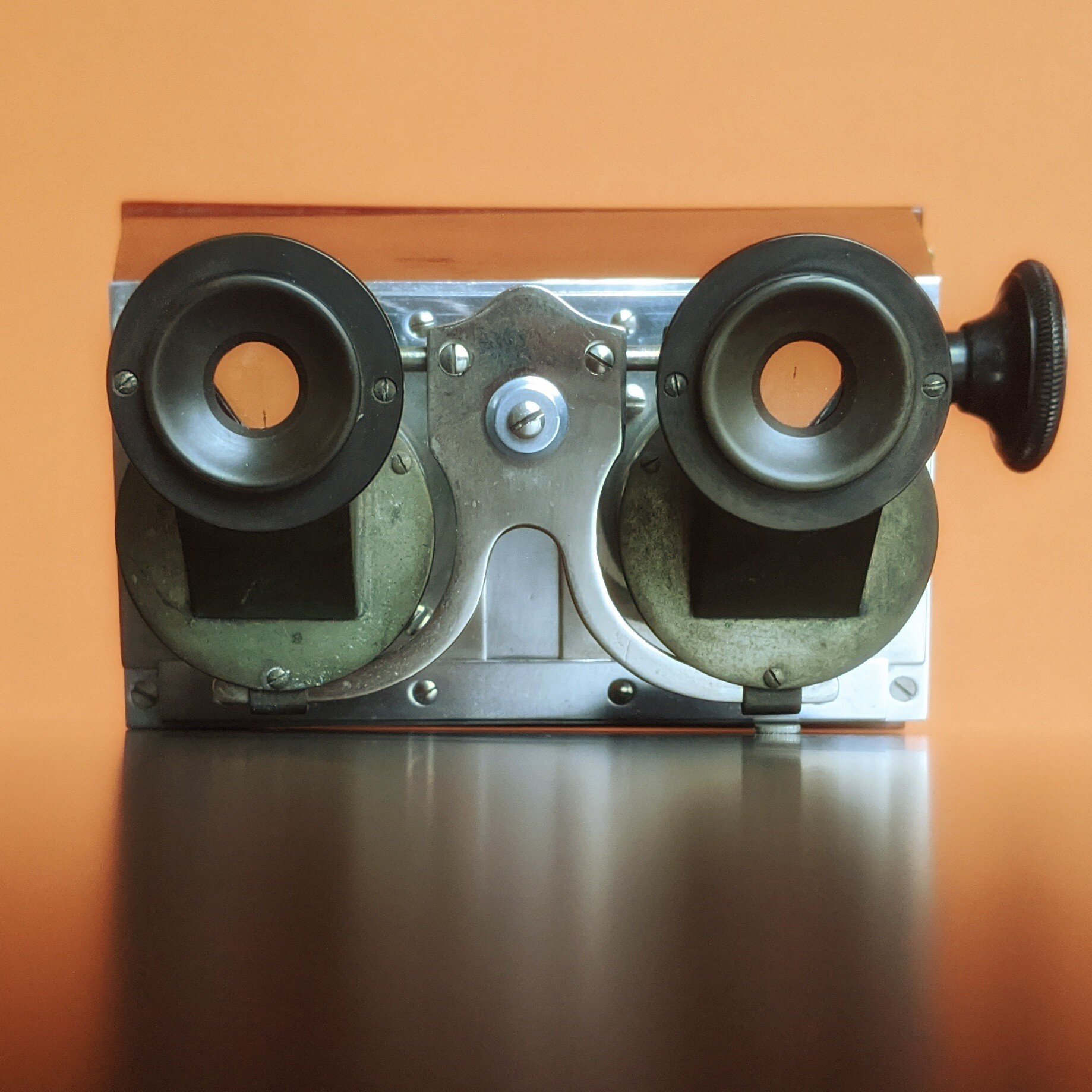Jules Richard Verascope Transposing Stereoscope
France, 1910s
In stereoscopic photography, to get a 3D effect, one has to cut the resulting shots and transpose the images before viewing. It’s a time-consuming process. In the early 1900s, Jules Richard sold special transposing stereoscopes — also known as autochrome stereoscopes — where each eyepiece has a tetrahedron-shaped prism and a total reflection prism. When using these viewers, the prisms enable viewing of the non-transposed images in 3D. These stereoscopes were also useful for viewing color autochromes that were popular then. We have the three models below in our collection.
6 x 13 cm Transposing Stereoscope, Nickel-Plated
Tetrahedral and reflecting prisms behind the lenses of this stereoscope produce lateral inversion that enables one to view images in 3D that haven't yet been transposed for 3D, such as autochromes or negatives. The stereo viewer's front plate and the eyepiece's metal parts are nickel-plated. The eyepieces have an adjustable eye distance and can be focused using a rack and pinion.
45 x 107 mm Transposing Stereoscope
In the March 1912 Jules Richard catalog, this stereoscope is referred to as a “stereoscope redresseur” and also as a “stereoredresseur.” While not as fancy as the version above, the purpose was the same: viewing glass negatives or stereo autochromes. The eyepieces are mounted on moveable plates allowing the eye spacing to be adjusted. Focus is achieved by using the knob on the side.
6 x 13 cm Transposing Stereoscope
This model has the same eyepiece design as the one above but has a longer body and accepts 6 x 13 cm glass slides.












